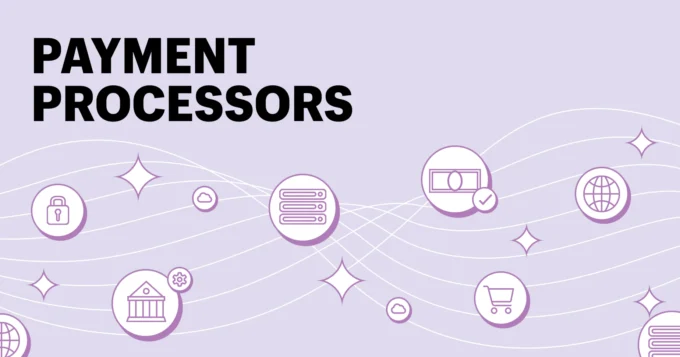After a few years in business, several payment service providers and ISOs find that if they use their own payment management platform, they can cut costs by a lot and speed up processing. But, the complexities of how to become a payment processor and PCI compliance make bringing everything in-house a daunting prospect.
This article will talk about how to set up payment gateway providers on your own and what problems you might run into.
How to Choose a Payment Gateway Software
To begin, a company that wants to process payments on its own must acquire payment gateway software.
Possible solutions include developing one’s own software, purchasing connectors and integrating them into one’s own customer management product, or licensing an existing payment gateway program. With current payment gateway provider software, most businesses may choose between self-hosting (via a software license) and cloud-hosting (through a third-party service) for their transactions. Visit our blog for posts addressing how to become a payment processor as well as gateway solutions.
The next step is to select a PCI environment for the payment gateway software.
Hosting by a payment processing provider

Source: webhostingsrbija.rs
A company that wants to accept payments on its own can either build its own server infrastructure or hire a PCI-compliant hosting provider (like Firehost or Rackspace).
A self-hosted server architecture includes having your own data center, IT team, and yearly PCI audit. On the other hand, PCI-compliant hosting operates similarly to standard VPS hosting (eliminating the need for network and data center engineers), with the exception that the servers are placed within an already PCI-compliant network.
PCI-compliant hosting costs more than non-PCI-compliant hosting for the same server configuration because of the additional PCI requirements.
Storage of Cards and PCI Compliance
Becoming a payment service provider is a goal that your business can easily achieve, but first, it is necessary to take PCI compliance into account. To make the transition smoother, your next steps should be to find the right PCI auditor company and determine the scope of the audit. Consider partnering with renowned assessors such as Security Metrics and Coalfire for quotes on their services.
During a PCI audit, one of the challenges is determining the best way to store credit card information. If you plan on purchasing a tokenization appliance, factor its price into your overall budget. Check the post on our site on tokenization for more details.
How to choose banks and payment processors

Source: shopify.com
The choice of banks and/or processors who will handle transaction processing is the last matter to be dealt with.
In some situations, you might need to connect with other payment gateway providers, credit card processors, or banks to become a payment service provider. It is usually a good idea to find out what kinds of integrations a company already has in case you decide to acquire their payment gateway software.
Take into account these recommendations while determining the extent of prospective integration efforts.
- Payment gateway integrations are often simple and don’t need a protracted certification procedure.
- Even though bank interfaces are usually easier and smaller than credit card integration, certain community banks probably don’t have the latest technology to fully automate the process.
- Even if the software you license includes this kind of integration, it still has to be validated under your name and in your PCI environment. Credit card processor integration may be rather difficult, especially if legacy systems are involved.
Feel free to consult UniPay Gateway if you’re thinking about how to become a payment processor.
Managing Risk and Fraud Prevention
As a payment service provider, managing risk and preventing fraud are essential components of maintaining a secure and trustworthy processing system. The consequences of fraud and risk can be devastating, causing significant financial losses and damaging your company’s reputation.
To effectively manage risk and prevent fraud, payment service providers must implement robust risk management systems and procedures. This includes monitoring transaction patterns and behaviors, identifying and blocking suspicious activity, and implementing fraud prevention measures, such as two-factor authentication and address verification.
In addition, service providers should regularly review and update their risk management and fraud prevention policies to stay up-to-date with new trends and evolving risks.
Optimizing Flows and User Experience
Optimizing flows and user experience is crucial to ensure that customers have a seamless and hassle-free experience. A clunky process or a confusing checkout page can lead to cart abandonment and lost sales.
Payment service providers must focus on optimizing flows and user experience by simplifying the process and streamlining the checkout process. This includes implementing features such as one-click checkout, automatic reminders, and easy payment methods.
In addition, payment service providers should ensure that their processing system is compatible with various methods and devices to cater to the diverse needs of their customers.
Scaling Operations and Expanding Services

Source: semmensco.com.au
As payment service providers grow, it becomes necessary to scale their operations and expand their services to accommodate their growing customer base. Scaling operations and expanding services require careful planning and execution to ensure that the processing system can handle the increased volume of transactions.
Payment service providers should invest in upgrading their processing infrastructure to ensure that it can handle large volumes of transactions without any delays or errors. Additionally, they should hire additional staff and train them to handle the increased workload.
Expanding services may include offering new payment methods or adding new features to the payment processing system. Payment service providers should conduct market research and analyze customer feedback to identify areas where they can improve their services and expand their offerings.
Maintaining Security and Data Privacy
Maintaining security and data privacy is critical for payment service providers to build trust with their customers. Payment service providers must comply with various regulatory standards and implement robust security measures to protect sensitive customer information.
Payment service providers must invest in cybersecurity measures, such as data encryption, intrusion detection systems, and regular security audits, to prevent data breaches and protect customer information.
In addition, service providers should be transparent about their data collection and use policies and provide customers with options to control their data. This includes providing clear privacy policies and allowing customers to opt-out of data collection and use.






